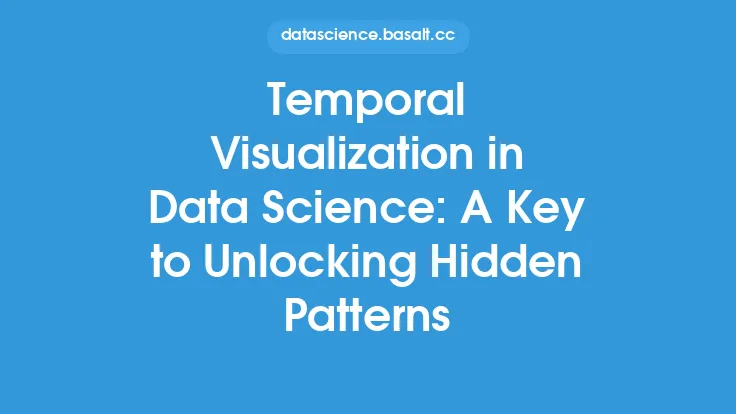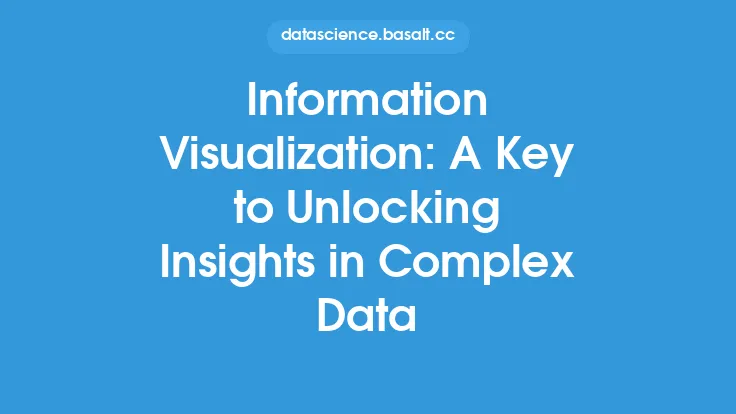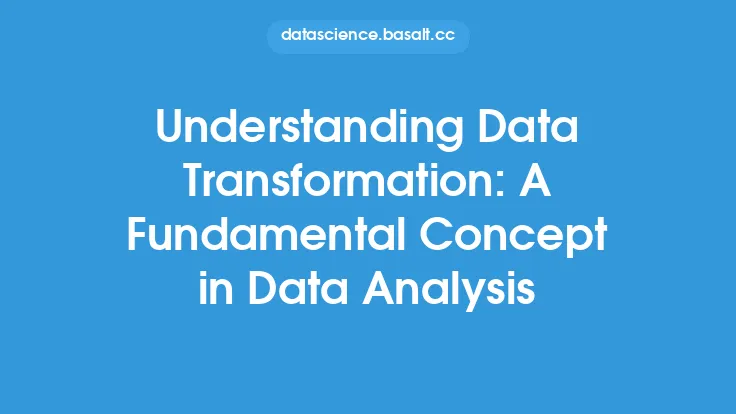Data transformation is a critical step in the data mining process, as it enables the conversion of raw data into a format that can be easily analyzed and mined for insights. This process involves applying various techniques to modify the data, making it more suitable for analysis and modeling. The goal of data transformation is to unlock hidden patterns and relationships within the data, which can then be used to inform business decisions, predict future trends, and identify opportunities for growth.
Introduction to Data Transformation Techniques
There are several data transformation techniques that can be applied, depending on the nature of the data and the goals of the analysis. These techniques can be broadly categorized into two main types: feature scaling and feature engineering. Feature scaling involves modifying the scale of the data to ensure that all features are on the same level, which can help to prevent features with large ranges from dominating the analysis. Feature engineering, on the other hand, involves creating new features from existing ones, which can help to capture complex relationships and patterns within the data.
Some common data transformation techniques include normalization, standardization, and logarithmic transformation. Normalization involves scaling the data to a common range, usually between 0 and 1, which can help to prevent features with large ranges from dominating the analysis. Standardization involves subtracting the mean and dividing by the standard deviation for each feature, which can help to reduce the impact of outliers and improve the stability of the analysis. Logarithmic transformation involves applying the logarithm function to the data, which can help to reduce the impact of extreme values and make the data more normally distributed.
Data Transformation for Handling Missing Values
Missing values are a common problem in data mining, and can have a significant impact on the accuracy and reliability of the analysis. Data transformation can be used to handle missing values, by replacing them with imputed values or by creating new features that capture the patterns and relationships within the data. There are several techniques that can be used to impute missing values, including mean imputation, median imputation, and regression imputation. Mean imputation involves replacing missing values with the mean of the feature, while median imputation involves replacing missing values with the median of the feature. Regression imputation involves using a regression model to predict the missing values, based on the patterns and relationships within the data.
Data Transformation for Handling Outliers
Outliers are another common problem in data mining, and can have a significant impact on the accuracy and reliability of the analysis. Data transformation can be used to handle outliers, by applying techniques such as winsorization or trimming. Winsorization involves replacing extreme values with a value that is closer to the median, while trimming involves removing a portion of the data at the extremes. These techniques can help to reduce the impact of outliers and improve the stability of the analysis.
Data Transformation for Handling Non-Normal Data
Many data mining techniques assume that the data is normally distributed, but in reality, many datasets are non-normal. Data transformation can be used to handle non-normal data, by applying techniques such as logarithmic transformation or square root transformation. These techniques can help to make the data more normally distributed, which can improve the accuracy and reliability of the analysis.
Data Transformation for Handling High-Dimensional Data
High-dimensional data is a common problem in data mining, and can have a significant impact on the accuracy and reliability of the analysis. Data transformation can be used to handle high-dimensional data, by applying techniques such as principal component analysis (PCA) or singular value decomposition (SVD). These techniques can help to reduce the dimensionality of the data, which can improve the accuracy and reliability of the analysis.
Best Practices for Data Transformation
There are several best practices that should be followed when applying data transformation techniques. These include: (1) understanding the nature of the data and the goals of the analysis, (2) selecting the most appropriate transformation technique, (3) evaluating the impact of the transformation on the data, and (4) documenting the transformation process. By following these best practices, data miners can ensure that the data transformation process is effective and reliable, and that the insights gained from the analysis are accurate and actionable.
Common Challenges and Limitations of Data Transformation
While data transformation is a powerful tool for unlocking hidden patterns and relationships within data, there are several common challenges and limitations that should be considered. These include: (1) the risk of over-transforming the data, which can lead to a loss of information, (2) the difficulty of selecting the most appropriate transformation technique, (3) the challenge of evaluating the impact of the transformation on the data, and (4) the need to document the transformation process. By understanding these challenges and limitations, data miners can take steps to mitigate them, and ensure that the data transformation process is effective and reliable.
Future Directions for Data Transformation
The field of data transformation is constantly evolving, with new techniques and methods being developed all the time. Some future directions for data transformation include: (1) the development of more advanced techniques for handling missing values and outliers, (2) the application of data transformation to new domains and industries, (3) the integration of data transformation with other data mining techniques, such as machine learning and text mining, and (4) the development of more user-friendly and accessible data transformation tools. By staying up-to-date with the latest developments in data transformation, data miners can ensure that they are using the most effective and reliable techniques, and that they are unlocking the full potential of their data.





